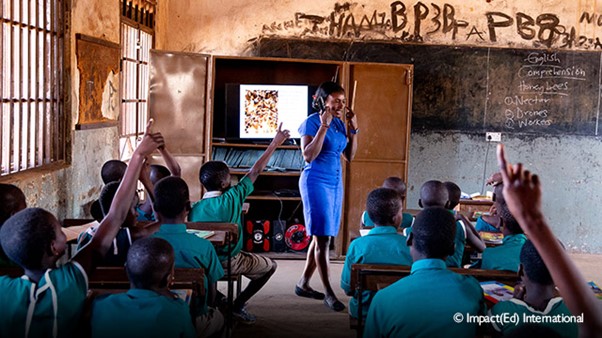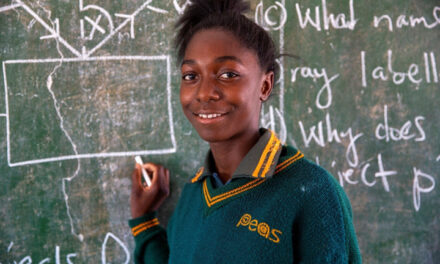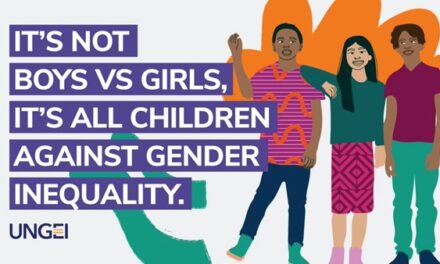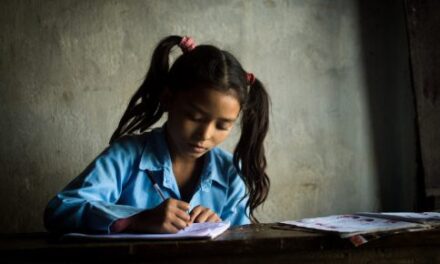This blog was written by Anita Reilly, Girls’ Education Challenge. It was published on the Girls’ Education Challenge website on 15 December 2020.
The Foreign, Commonwealth and Development Office’s Education Policy makes good teaching a top priority, recognising that teaching quality is the most important factor affecting learning in school. It is difficult to quantify what makes a good teacher but, generally, there are some core traits. A good teacher is someone who cares about students’ wellbeing, develops nurturing relationships based on mutual respect, knows how to teach their subject, and inspires and motivates students to learn it. A good teacher works with individual students to overcome barriers that are impeding their learning – be it a lack of confidence, a learning difficulty or a personal issue. Our newly launched Quality Teaching Framework (QTF) outlines some of the factors that determine quality teaching for marginalised adolescent girls.
While girls are at the centre of the Girls’ Education Challenge, we also pay close attention to the needs of teachers and help ensure that all teachers have the opportunity for continuous professional development that is relevant to their needs and context. The QTF is a learning tool to help practitioners think through their approaches to teacher professional development (TPD). It aims to prompt and guide thinking on the different components of effective TPD programmes and it maps out some of the most important teacher competencies to consider when working with marginalised adolescent girls.
Why the focus on this group?
While there have been huge improvements in girls’ access to education in recent decades, girls still face the worst forms of acute exclusion in the world’s poorest countries and this is particularly the case for those with intersecting disadvantages in terms of poverty, displacement or disability. Furthermore, the current pandemic could mean an additional 11 million girls and young women never return to school.
Gender disparities (generally in favour of boys) increase the higher the level of schooling. In 2018, the percentage of countries that had achieved gender parity at the primary level was 65%; at the lower secondary was 51% and at the upper secondary was 24%. Disparities often surface throughout adolescence as negative gender norms mean a higher value is placed on a girl’s domestic role than on her education. An early pregnancy or a looming marriage often denotes the end of a girls’ education. Adolescence can occur during primary or secondary school (depending on the age a girl starts her education and how she progresses) and the transition between primary and secondary is often precarious.
Teachers play a pivotal role in ensuring girls are encouraged to succeed, in learning environments that are safe spaces free from violence and conducive to learning. One of the reasons for dropout during adolescence are the social norms acting on girls that translate to girls having low aspirations for their future – these norms also play out in schools. The curriculum, for example, can portray a narrow view of what a girl can achieve. Representations of women in domestic or caregiving roles and men as engineers, doctors or labourers can reinforce negative stereotypes.
Furthermore, teachers themselves may inherently hold gender biases and have different expectations for boys’ and girls’ futures. As outlined in the GEM 2020 report: ‘Teachers still expect girls and boys to have different academic abilities, which affects academic outcomes.’ Adolescents internalise the expectations of parents and teachers, which influences the formation of their identity and their life aspirations. If a teacher’s expectation is for girls to marry young, retreat to the domestic sphere and have children, girls will internalise this expectation and alternative aspirations may be dampened. Conversely, if a teacher challenges prevailing stereotypes, and widens the possibilities for girls’ futures, girls’ aspirations for their future can extend beyond the home.
Teachers also play a pivotal role in the socialisation of adolescent girls and have the potential to open up a world beyond the constraints of restrictive gender norms. Teachers’ attitudes and behaviours, curriculum content and the opportunities within schools for participation and leadership, are all major factors in the socialisation of adolescents and can potentially limit (or conversely expand) girls’ visions for themselves and their futures. Of course, quality teaching does not rest solely with the teachers themselves, but the education systems within which they are situated.
Many GEC projects are working in collaboration with national governments and working closely with teachers to ensure the implementation of gender-responsive teaching. TPD programmes are focusing not only on subject knowledge and pedagogy, but also on gender equality. Some of the core tenants include:
- Working to ensure the curriculum helps girls to question their own realities and to envision diverse and different ways of being and doing; a curriculum that provides girls (and boys) with examples of not just what girls tend to do now, but what they could be doing outside the confines of dominant gender norms.
- Working with teachers to ensure they have the skills to challenge negative stereotypes. The KEEP project in Kenya for example is working with teachers to critically analyse examples of negative gender stereotyping and develop strategies for challenging these stereotypes in the classroom.
- Facilitating teachers’ reflection on their own biases and beliefs, how these affect the way they teach and how they influence their learners. This is the starting point to changing behaviours in the classroom.
- The exploration of gender-sensitive language in the classroom. If teachers are careful and conscious of the language they choose, it can be a powerful way of promoting gender equality and shifting gender stereotypes.
- TPD content is also unpacking the challenges adolescent girls face and the impact these have on their learning and transition to work or further education.
- Working with teachers, educators and mentors to ensure they have the skills to raise girls’ aspirations, and build their social and emotional skills such as resilience, goal setting, and perseverance.
GEC projects work with some of the world’s most marginalised adolescent girls. The Quality Teaching Framework outlines some of the key teaching competencies to consider when teaching these groups. For example, gender-based violence is an everyday reality for many girls, thus a core teaching competency should be the promotion of safe classrooms. Many girls are living in contexts of crisis or conflict. Therefore, it is important for a teacher to be able to promote emotional resilience and wellbeing. These competencies are not exhaustive but are what projects have highlighted as integral to ensuring quality teaching for the most marginalised girls – which inevitably means better teaching for all.





